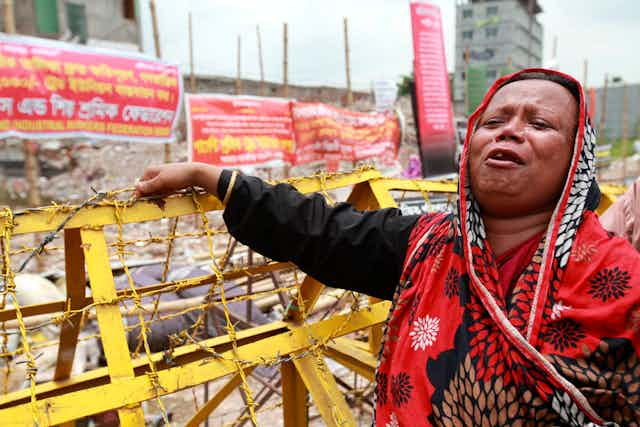Three years since the Rana Plaza collapse which killed 1100 people, small steps have been made towards improving the transparency of the garment supply chain, to help consumers understand the conditions in which their clothes are produced.
The collapse of a garment factory in the plaza highlighted the lack of safety procedures and the oppressive conditions that workers are subjected to. Yet conditions and wages remain very poor for garment factory workers in countries like Bangladesh, despite surface efforts by western retailers.
What has happened since the collapse?
The Rana Plaza was one of many in Bangladesh’s large apparel manufacturing industry, producing clothes exclusively for consumption in the west. In response to its collapse, the Bangladesh Accord was signed by large manufacturers who source from the region.
This legally binding document specified the safety conditions required of suppliers from the region, so signatories may appear to be taking affirmative action. But many brands who have signed up to it are still selective in disclosing how its requirements have been applied and exactly where they are sourcing from. In this sense, there is a disconnect between the adoption and the full implementation.
The Oxfam report on transparency in the fashion supply chain, found that just five of the 12 largest retailers in Australia are actually willing to disclose the locations of where their products are manufactured. And it’s not just Bangladesh - from Bangladesh to Myanmar, from China to Cambodia and Vietnam, Australian brands are operating in near secrecy about how their clothes are made.
The Solidarity Project formed in Bangladesh to support worker rights through trade unions in the wake of the disaster. I met with them on a trip to Bangladesh in January. Kalpona Akter, a project manager at the centre, told me that the Bangladesh Accord is an improvement but still does not address the other major issue facing workers – desperately low wages.
Currently the minimum wage is 5000 taka or approximately USD$65 per month. Kalpona argues that this is not a living wage, which should account for the approximate local costs of food, housing, healthcare and education. The centre calculates that the current minimum wage is little more than half of what an actual living wage would be.
Supply chain transparency is the key
The supply chain for garments is long and complex, far beyond just the “made in China” or “made in Bangladesh” label.
In clothing manufacturing it is particularly difficult to completely trace the supply chain. The label that reads “made in Bangladesh”, only really means that it was assembled in Bangladesh.
But when you look at a finished product such as a winter jacket bought from a regular high street store, its possible that the zipper came from Japan, the fleece might be from Taiwan, imitation fur from Thailand, press studs may be from Germany and cotton from India or Uzbekistan.
Research on supply chain transparency across a multiple industries including agriculture, electronics, and tea, shows that countries’ compliance with the transparency accord is varied.
Chinese manufacturers selectively implemented sustainability regulations, while reporting as compliant. The tea industry has addressed this issue by implementing a third party independent monitoring system. In the case of tea, the Rainforest Alliance undertake assessments of worker conditions as well as providing incentives to tea plantation owners to address social sustainability issues.
Each country has different legislative requirements in terms of worker rights and minimum wages, and the ease of violating those legislative requirements may vary. Because of this complexity, consumers need to be able to trace the supply chain, not just to one manufacturer but to all the manufacturers to ensure that the final product complies to basic human rights standards.
The world quickly forgot after the disaster in 2013, but it is a major issue in Bangladesh. There is still a lot of work to be done to ensure that this will not happen again. The answer is not in boycotting clothes made in Bangladesh, the answer is in campaigning for our brands to ensure safe working conditions and adequate pay to factory workers through their extended supply chains.

